“Captain, the runway and skies are yours.”
With the scent of kerosene in the air and the runway glimmering in a heaty mirage – “Roger that”, replies the man in the box to Tower Control, as he cautiously runs through his pre-flight checklist.
Every flight to the skies tests the bond between a pilot and his aircraft. After all, when you’re manoeuvring at Mach 1, 15,000 feet up-top – man and machine become one. During these critical moments, every pilot relies on accuracy, mechanical reliability, and visibility, delivered to him by the aircraft and his flight gear. Right from the cockpit’s button-flooded instrument panel to the wire-mazed electrical bay underneath or agile ailerons and rudder fins that enable pilots to jet through the clouds – up there, a pilot is only as good as his gear.
Throughout the history of military aviation, pilots have looked to their mechanical timepieces as reliable, precise in-flight navigational tools. And for the last 85 years, Swiss maison, IWC Schaffhausen has pioneered the field of manufacturing functionality-focused, robust, and distinctly elegant Pilot’s Watches. We speak with IWC’s Chief Design Officer – Christian Knoop on the modern appeal behind these novelties and how a collector must approach them.
Why should one invest in a Pilot’s Watch?
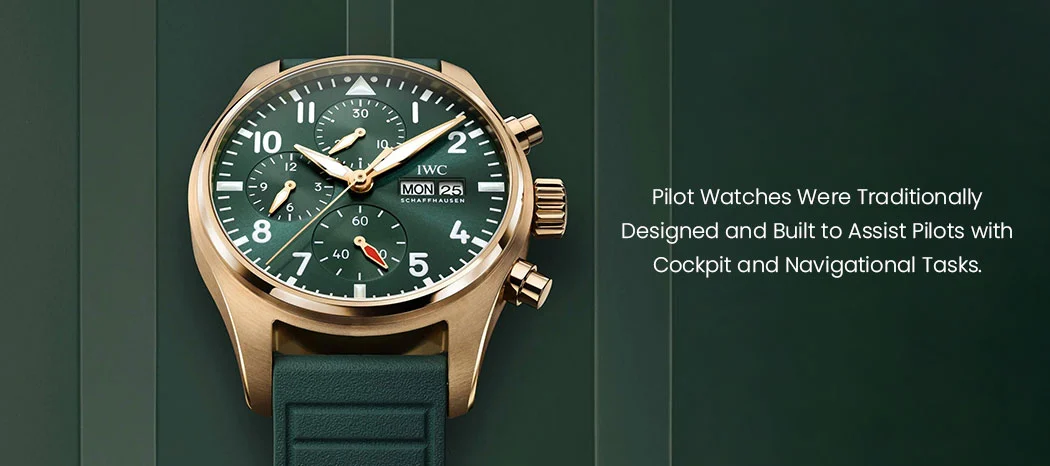
Pilot watches were traditionally designed and built to serve a cause – wrist-worn instruments assisting pilots with cockpit and navigational tasks. Take, for example, tracking engine operating hours, measuring fuel consumption, or even performing high-altitude celestial navigation. Watch collectors are drawn towards Pilot Watches for its utility-centred build and historical use in aviation. More so, its robustness, functional design, and easy-to-read, high-contrast dials – making it a professional cockpit tool above being a premium, well-manufactured timepiece. Today, Pilot Watches exude an archetype purist design, making them a choice for style-conscious customers, working also as a canvas for artistic interpretations.
What are the best complications that complement a Pilot Watch?
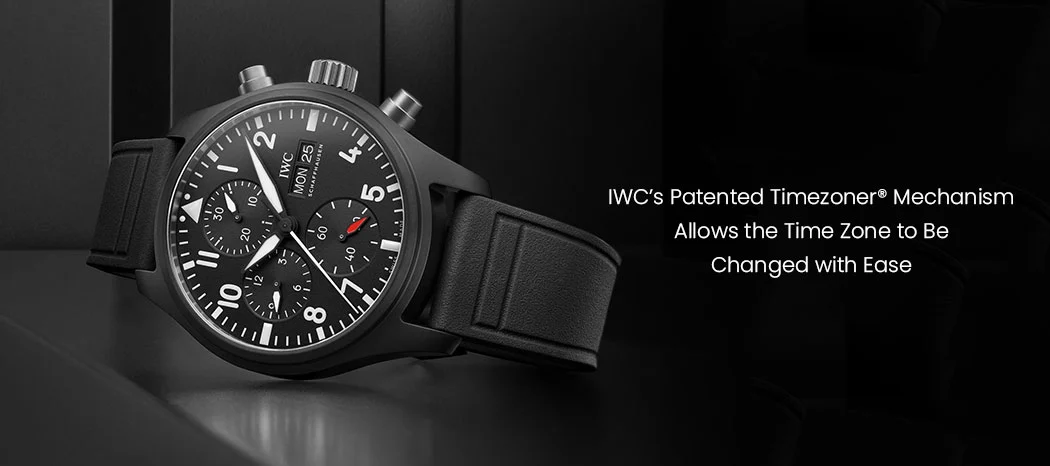
Well, there’s a fleet of complications worth mentioning. First, and quintessentially, is a chronograph – a professional feat suitable even for everyday use. While pilots are geographically capricious, complications that indicate two or more zones certainly fit here. IWC’s patented Timezoner® mechanism, which allows you to change the time zone simply by pressing down and turning the bezel is an example of such. Finally, I believe the legendary perpetual calendar would up the ante with its mechanical mastery, demanding a high watch value too.
What about build?
Watchmaking shares an intertwined heritage with aviation for the same reason it does with motorsports, diving, and exploring – robust micro engineering and build quality. I believe a modern Pilot Watch should meet the criteria you look for in watches that cater to the aforementioned fields. A highly robust case construction built to withstand the extremities of nature and high-performance endeavours/adventures. Easy legibility even under difficult lighting conditions is another key factor, and luminescent elements ensure that time can be read also at night. I also believe the convenience of versatility is an interesting aspect to consider. Being able to swap straps to suit the endeavour at hand is crucial. IWC’s Pilot’s Watches feature the EasX-CHANGE® quick-change system, which allows you to change the strap at the touch of a button and without any tools.
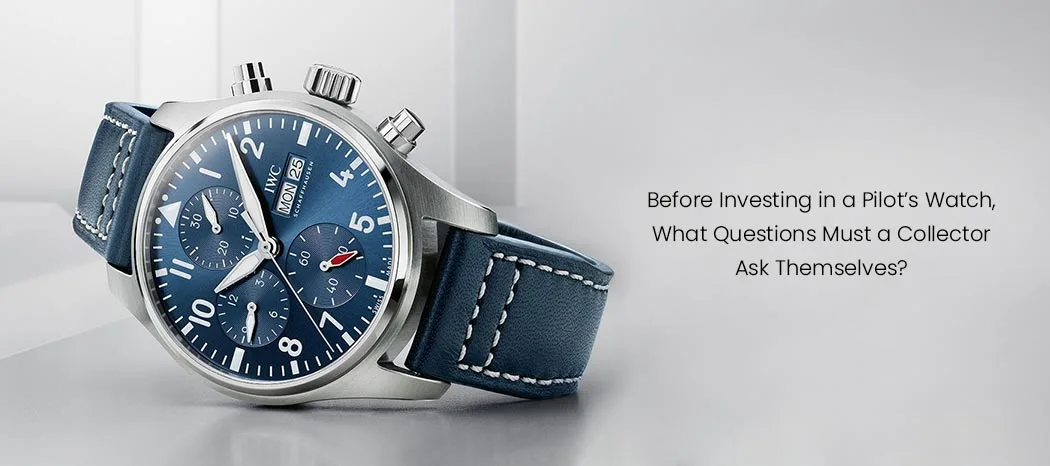
Before investing in a Pilot’s Watch, what questions must a collector ask themselves?
- Firstly, how important is design for you? Would you fancy vintage designs or rather contemporary ones?
- Second, are you buying this timepiece as an investment? As a tool-watch for adventure activities? Casual everyday use? Or simply elegance? You need to pick the right case material for your timepiece based on your answer. Pilot Watches today offers case options of stainless steel, titanium, ceramic, coloured ceramic, 5N gold, bronze, and more.
- Is water resistance a crucial aspect for you to consider? (based on your purpose of buying)
- Does the watch have a quick-change system for its strap? Or other versatility features?
- What strap option would be ideal for your timepiece? (again, based on your purpose of buying)
- Does the watch feature chronograph/complication certifications? This indicates the efficiency, quality, and accuracy of the movement – highly crucial for utility-centred watches like Pilot Watches.
How do you think Pilot Watches have evolved in modern times?
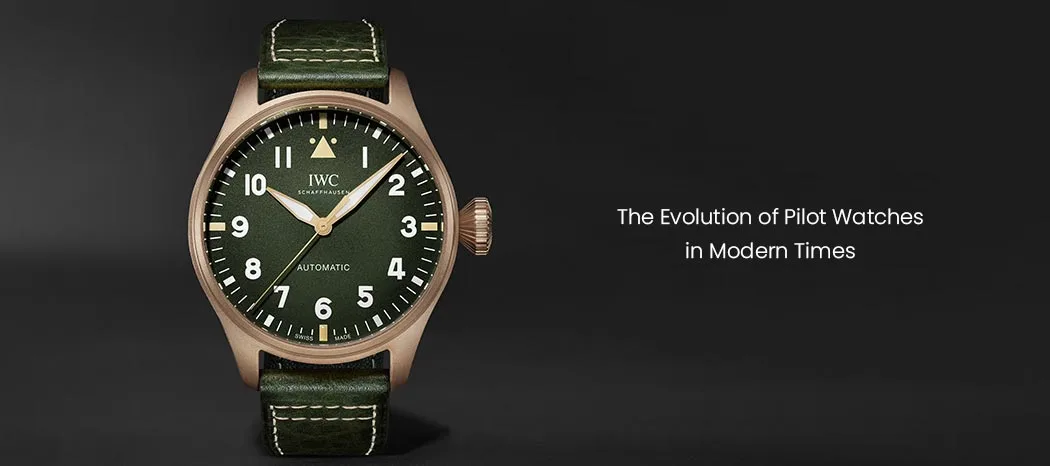
Today’s Pilot Watches are quintessential modern sports watches – robust and versatile yet designed for the skies. Sizing options has allowed clientele to expand their options and preferences. At IWC, Schaffhausen, we strive to consistently expand our portfolio – ranging from the Pilot’s Watch Automatic in 36 millimetres to the 46-millimetre case of the Big Pilot’s Watch. Material experimentation is also an interesting new aspect of Pilot Watches, allowing them to enhance their robustness and lightness. IWC offers a unique case material titled, Ceratanium® – an in-house developed, exclusive material that combines the lightness and structural integrity of titanium with the hardness and scratch-resistance of ceramic.
While Pilot Watches hold a definitive place in IWC’s heritage, in today’s competitive market, what gives them the edge?
IWC Schaffhausen manufactured its first Pilot’s Watch in 1936 and hasn’t ceased since. We have an extensive legacy in this field. What sets IWC apart is our experience in engineering professional aviation instruments for clients as well as the military. The Mark 11, developed in 1948 for the British Royal Air Force is one example of our work for the military. Throughout our lineage of manufacturing Pilot Watches, we’ve consistently fostered an intensive dialogue and exchange with professional pilots and aviation experts to intimately gauge their tactical needs and ergonomic requirements and implement them into our offerings.
This dialogue continues today too within our Professional Pilots Watches Program. During the last decade, IWC has collaborated with more than two dozen squadrons of the US Navy and other armed force divisions to carefully develop Pilot’s Watches for their members. These consistent learnings through time have been directly channelled into the development of each new collection – allowing us to offer these professional/military-spec advancements to non-pilot customers as well.
Additionally, IWC offers a wide range of case sizes with their Pilot’s Watches, slating in between 36 to 46 millimetres. Within this, we cover a spectrum of complications, ranging from staple three-hand automatic models to advanced chronographs and top-shelf complications like Timezoners, perpetual calendars, and tourbillons. We take pride in offering all this in vintage aviation aesthetics as well as contemporary elegance, underlined with a high level of technical execution.


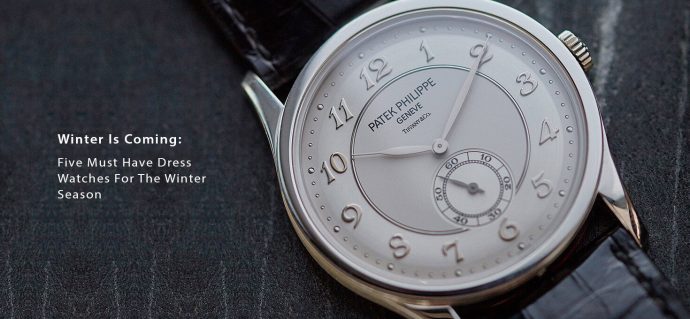


Recent Posts
Recent Comments
Archives